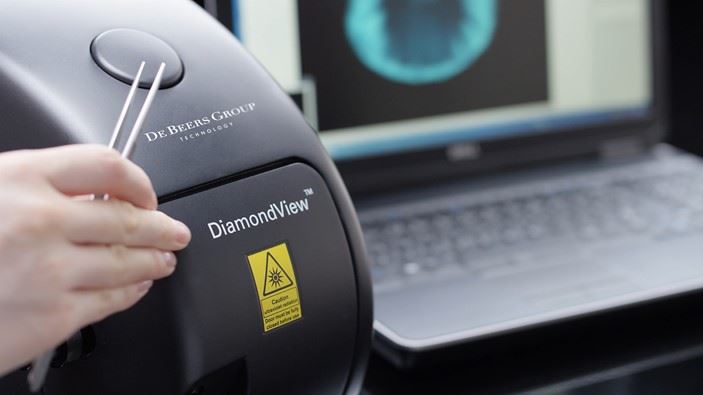
DiamondView
DiamondView looks at surface fluorescence by illuminating with shortwave ultra-violet light. An image is then viewed on a screen and a decision made on whether the stone is natural or synthetic.
To aid user interpretation of blue fluorescing CVD synthetics, easy-to-change filters are provided, which enhance features specific to synthetics.
DiamondView is available in standard magnification for stones mainly in the 0.05ct to 10ct size range, and high magnification for viewing for melee-sized goods from 0.01ct to 0.2ct, such as AMS referrals and for viewing fine detail on large stones.
Loose polished stones are held in place by a vacuum holder. It is also possible to look at some mounted goods, such as stud earrings and simple rings, by changing the holder.
Features Include:
- Mains power adaptor cable with plug (for the destination country).
- USB A-B cable.
- IEEE1394 FireWire 6-pin cable.
- Software CD (Windows 7 compliant).
- Calibration samples (calcite and ball bearing).
- Suction cups (2mm x 2.5mm and 2mm x 3.5mm).
- Sample height-setting gauge.
- Jewellery holder.
- Quick start guide.
- User manual.
- One year parts/service warranty.
- User training can be provided upon request. A small fee may apply. Contact us for further details.
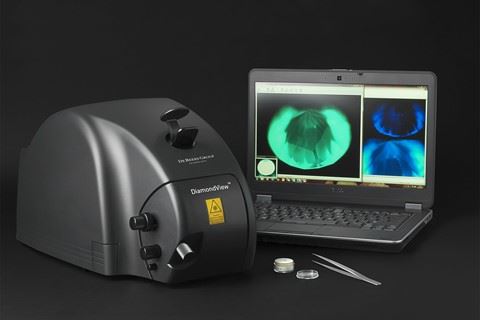
The DiamondView is approximately 20cm(w) x 40cm(d) and 25cm(h).
DiamondView looks at surface fluorescence by illuminating with shortwave ultra-violet light.
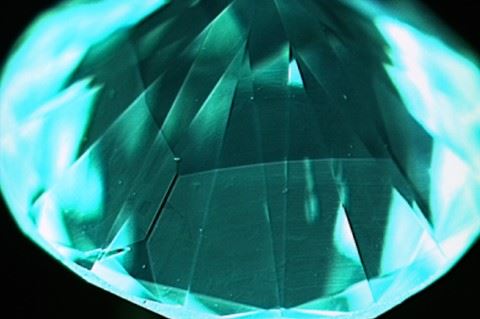
Colourless HPHT Synthetic
Colourless HPHT synthetics showing blocky growth sectors
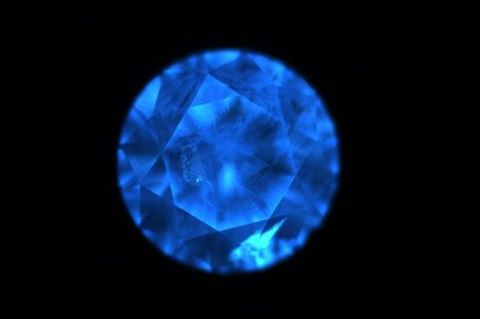
DiamondView Standard
Image showing a 0.20ct Type I natural stone under DiamondView Standard magnification
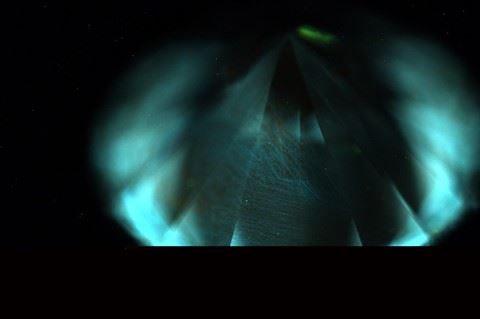
G Filtered
Showing a ‘G filtered’ image where the blue fluorescence is removed to reveal ‘synthetic’ features such as growth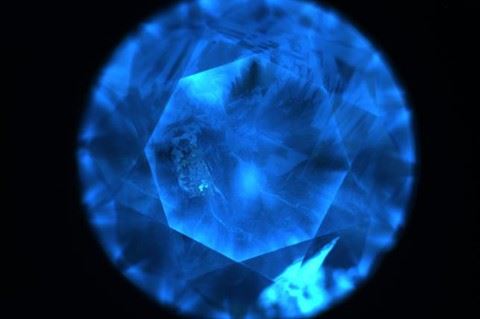
High Magnification Version
Image showing a 0.20ct Type I natural stone under DiamondView high magnification
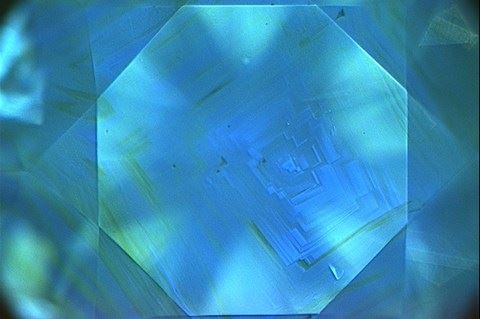
Octahedral Growth Banding
Diamond showing natural octahedral growth banding
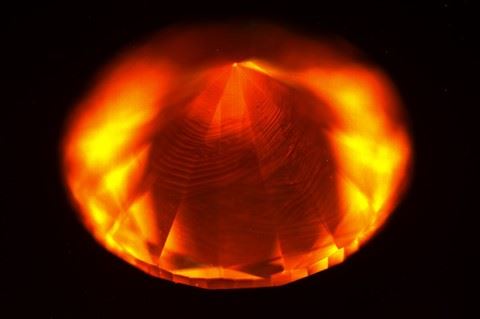
O Filtered
O filtered image in which the striations are clearly visible
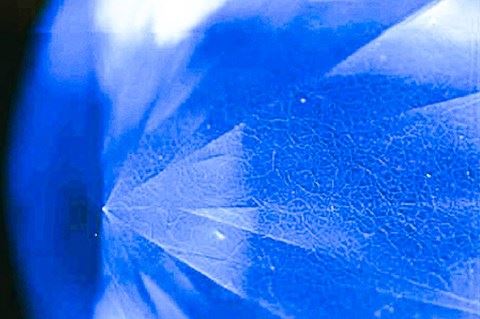
Type II Diamond
Type II Diamond showing natural dislocation features
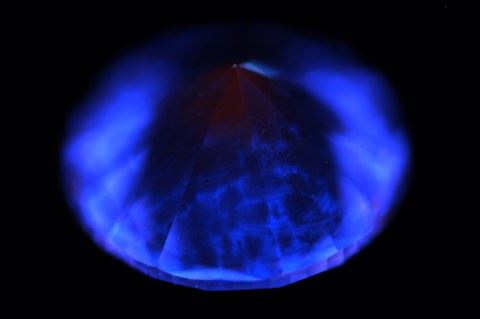
Unfiltered Blue
Unfiltered blue fluorescing CVD synthetic showing disorderd, linear blue fluorescing dislocations
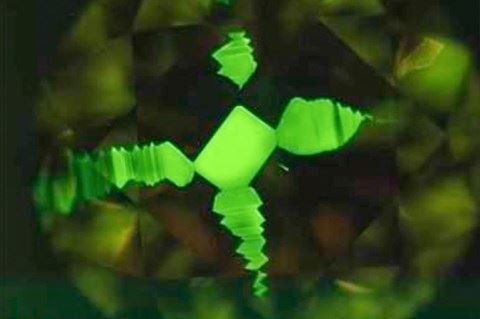
Yellow Diamond
Showing blocky growth sectors
DiamondView Frequently Asked Questions
DiamondView is designed for looking at diamonds and synthetics only.
DiamondView offers standard magnification for stones mainly in the 0.05ct to 10ct size range, and high magnification for viewing for melee-sized goods at 0.01ct to 0.20ct.
All colours.
DiamondView is designed for looking at polished gemstones. As-grown, synthetic stones have a very different shape from natural diamonds and therefore should be easily distinguished by eye. It is when they are polished that it becomes more challenging.
The DiamondView is also a very good research tool for looking at polished samples and cross-sections.
The DiamondView does need operator training as the user needs to be able to capture and interpret a fluorescence image of the stone. Example images are provided with the software and a training day can be provided at our Maidenhead, UK office.
All the instruments come with a one year parts and service warranty.
You can request support via our website. Go to Instrument Support.
Yes, the standard practice is that a manual is supplied in the language of the country of destination. If this is a new destination, there may be a small delay while the manual is translated.
Technical support can be offered from the UK by phone, email or web conferencing tools. We have an engineer based in India, to whom you may be referred.
Yes, all the instruments are CE marked; details of compliance to specific international standards can be found on the individual certificates of conformity, which are available upon request.
Yes, they are, and this is declared on the declaration of conformity.
Yes, all instruments are FCC compliant.
No, the manufacturers of the instruments do not have ISO 9000 registration.
A desktop PC with an IEEE 1394, (FireWire) interface or adaptor, Windows 7 or Windows 10. (Windows 10 installation requires a PC capable of accepting a PCIE adapter card which is supplied with the instrument.)